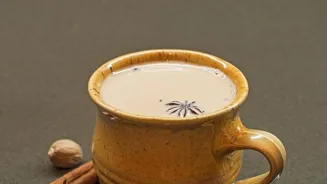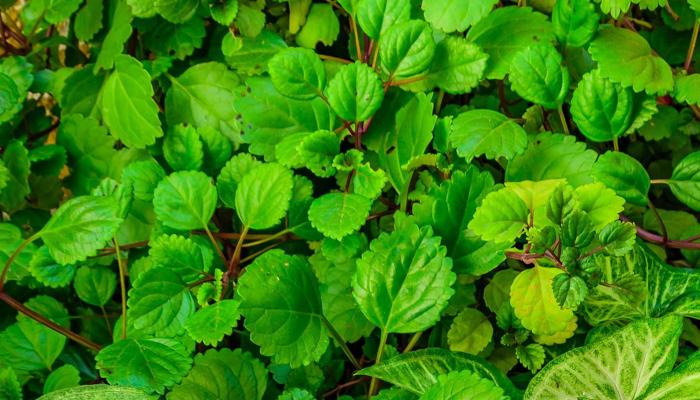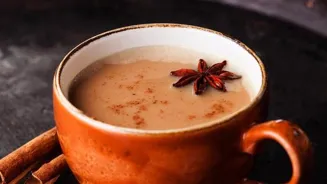Unveiling the Perfect Masala Chai: Secrets from Tea Connoisseurs! Elevate your chai game with expert tips
For many Indians, a cup of masala chai is more than just a beverage; it’s a ritual, a comfort, and
a daily necessity. From the bustling streets of Mumbai to the serene hills of Darjeeling, this spiced tea holds a special place in our hearts. But what makes a truly perfect cup of masala chai?
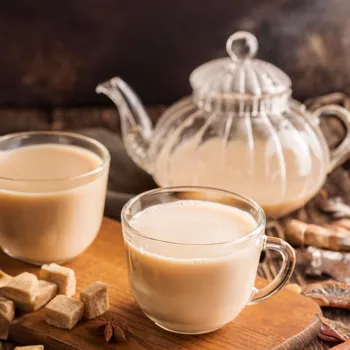
We spoke to chai enthusiasts across the country to uncover their secrets and tips for brewing the ultimate cuppa. Get ready to elevate your chai game!
Masala chai's essence lies in freshly ground spices' adaptability
The heart of any good masala chai lies in the masala itself. Forget those ready-made packets – the real magic comes from freshly ground spices. Most chai lovers agree on a base of ginger, cardamom, cloves, and cinnamon. But the beauty of masala chai is its adaptability.
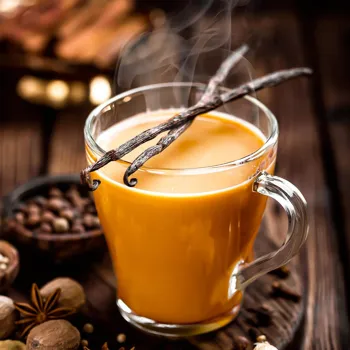
Some swear by adding a pinch of black pepper for a subtle kick, while others incorporate nutmeg or star anise for a warmer, more complex flavour. Experiment with different combinations to find your perfect blend.
Roasting the spices lightly before grinding can also intensify their aroma and flavour. Remember, the fresher the spices, the more vibrant your chai will be.
Grinding them just before brewing is ideal, but storing your homemade masala in an airtight container in a cool, dark place will help preserve its potency. The proportion of spices is also crucial.
Start with equal parts of ginger, cardamom, cloves, and cinnamon and adjust according to your preference. Don’t be afraid to experiment – the perfect masala chai is a personal journey. The quality of your spices also impacts the final flavor.
Opt for whole spices whenever possible, as they retain their essential oils and flavour far better than pre-ground versions. Look for vibrant colours and a strong aroma when selecting your spices.
Choose quality tea for flavorful masala chai; experiment with varieties for best taste
The foundation of a good masala chai lies in a quality tea base. While CTC (Crush, Tear, Curl) tea is the go-to for many, especially in North India, Assam tea is another popular choice for its strong, malty flavour.
Darjeeling tea, with its delicate aroma, is less common in masala chai but can add a unique twist. The key is to choose a tea that can stand up to the spices without being completely overpowered. Experiment with different varieties to find your favourite.
Loose leaf tea is generally preferred over tea bags for a richer flavour. The amount of tea you use will depend on the strength you desire and the type of tea you're using. A good starting point is one teaspoon of tea per cup of water.
Don't over brew your tea; bitter chai is a result of over brewed tea. Another important thing to keep in mind is to avoid using old tea leaves, the fresher the tea, the better the flavour of the chai. Tea should be kept in a cool, dry place, away from strong smells to keep it fresh.
So, ensure you are storing your tea correctly. The tea is one of the most important part of masala chai and should not be taken lightly.
Brew tea slowly with spices and milk for perfect chai
The brewing process is where the magic truly happens. In a saucepan, combine water, your freshly ground masala, and tea leaves. Bring the mixture to a boil, then reduce the heat and let it simmer for a few minutes. This allows the flavours to meld together beautifully.
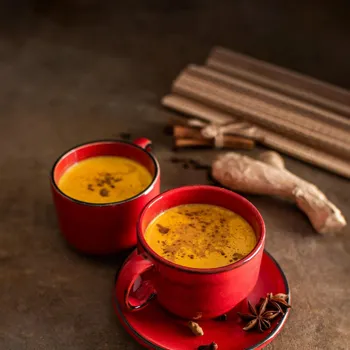
The length of simmering time is also important to keep in mind. Simmering for too long may result in a bitter tea. The simmering time may vary from 3 minutes to 5 minutes, depending on personal preference.
Then, add milk – ideally full-fat milk for a creamy texture – and bring the mixture back to a gentle simmer. Be careful not to let it boil over! The milk should heat through but not scald. Some chai lovers prefer to add the milk along with the water and spices, while others add it later.
Experiment to see what works best for you. The key is to achieve a harmonious balance of flavours and a smooth, velvety texture. Remember, patience is key. Don't rush the brewing process. Give the tea time to infuse and the spices time to release their aroma.
This will make a significant difference in the final taste. Keep watching your chai while it is simmering on the stove, that way you can ensure it does not boil over.
Experiment with sweeteners to find perfect masala chai sweetness level
Sweetness is a matter of personal preference when it comes to masala chai. Some prefer it strong and unsweetened, allowing the spices to shine through. Others crave the comfort of a sweet, milky brew. Traditional sweeteners include sugar (both white and brown), jaggery (gur), and honey.
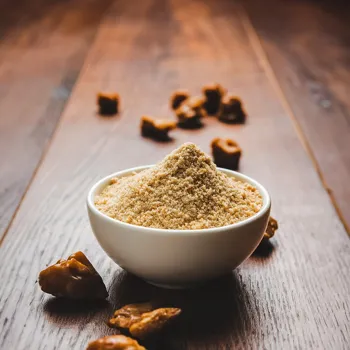
Jaggery adds a lovely caramel-like flavour, while honey provides a more delicate sweetness. Experiment with different sweeteners to find your perfect match. You can also adjust the amount of sweetener to your liking. Start with a small amount and add more as needed.
Remember, you can always add more, but you can't take it away! Some chai lovers also swear by using condensed milk for an extra rich and creamy chai. This is a popular choice in some parts of India.
The choice is entirely yours, so experiment and see what sweetness option you like better or resonates better with you. Try all varieties and combinations till you figure out what you like and what you don't like. The point is to try until you figure out the perfect combination.
Choose milk wisely for perfect masala chai; full-fat for richness, plant-based for vegan
The type of milk you use can significantly impact the taste and texture of your masala chai. Full-fat milk is generally preferred for its richness and creaminess, but you can also use toned milk for a lighter option.
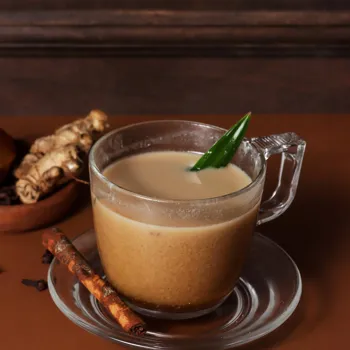
For those who are lactose intolerant or prefer a vegan alternative, plant-based milks like almond milk, soy milk, or oat milk can also be used. However, keep in mind that these milks may alter the flavour profile of your chai.
Coconut milk, for example, can add a subtle coconut flavour that complements certain spice blends. Experiment with different milk options to find the one that best suits your taste. Some chai lovers even like to use a combination of milk and cream for an extra decadent treat.
The temperature of the milk is also important. Adding cold milk to hot tea can lower the temperature and affect the flavour. Ideally, the milk should be heated before adding it to the tea. However, make sure that you do not scald the milk. Scalded milk can leave an aftertaste that is not desirable.
So watch the milk when heating it.
Serving masala chai is an art, enjoy it hot with snacks for a comforting experience
Serving your masala chai is an art in itself. Traditionally, it's served in small earthenware cups (kulhads) or glass tumblers. The warmth of the chai and the aroma of the spices create a sensory experience that is both comforting and invigorating.
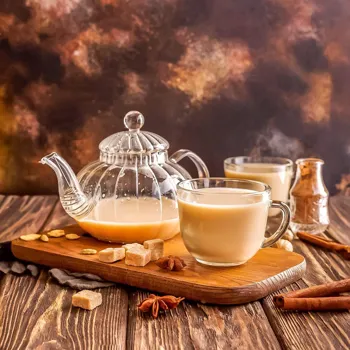
For an authentic touch, strain the chai through a fine-mesh sieve before serving to remove any tea leaves or spice particles. Serve it piping hot and enjoy it with your favourite snack, such as biscuits, mathri, or samosas.
Masala chai is best enjoyed in good company or as a moment of quiet reflection. No matter how you choose to enjoy it, the perfect cup of masala chai is a reminder of the simple pleasures in life which are enough to bring us joy. Remember to experiment and find what you like and what you don't like.
The point is to keep trying until you figure out what is the right combination for you. Happy sipping!
AI Generated Content. Glance/InMobi shall have no liability for the content